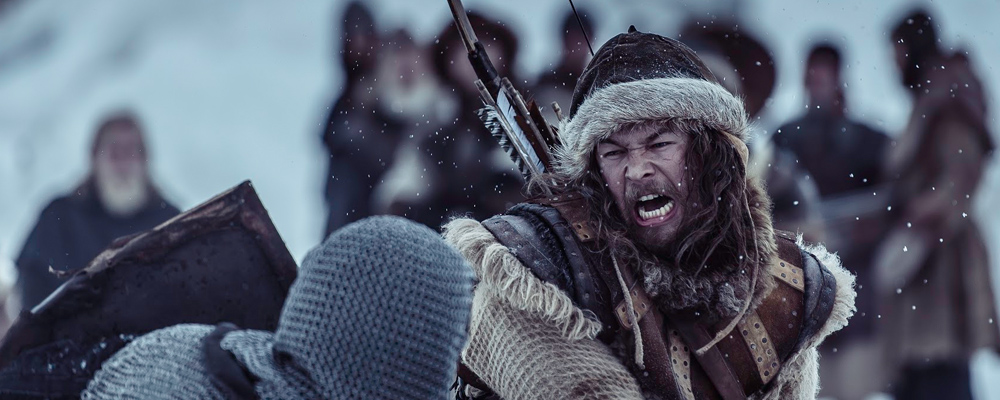Norwegian Film ‘The Last King’ Tells Thrilling Story of Baby Monarch
Sandra Miska
Norway made waves earlier in ’16 (pun intended) in the film world with the release of “The Wave.” Another Norwegian action film (one that is already a hit in its native country) “The Last King” is a historical epic based on true events that rocked the Norwegian monarchy over 800 years ago. Unusual for a foreign film, “The Last King” features a familiar face to American audiences, Kristofer Hivju. The actor from Norway widely known for his role as leader Tormund Giantsbane on “Game of Thrones,” is a rebel warrior who undertakes a dangerous mission in order to deliver the heir to the throne to safety. “The Last King” tells the story of a tumultuous chapter in Nordic history using many tropes found in American epics.
We first meet Torstein (Hivju) when a woman known as Inga of Varteig (Ane Ulimoen Øverli), the king’s mistress, hands her newborn baby son, Haakon, over to him to take care of while he leads her and others on a mission to get the child to safety during the ongoing civil war. Torstein travels not on horseback but on skis. Yes, skiing was apparently a form of transportation in 13th-century Norway.
Hivju, who is best friends and partners with Skjervald (Jakob Oftebro), plays a character who provides comic relief in the film. Skjervald is a more typical hero, complete with a beautiful, loving wife and baby son. He promises the missus that after this mission he will retire and live a quiet life with his loved ones. Predictably, his dream is shattered by tragedy.
The church is in a power struggle with the throne for control of Norway. However, the real danger to King Haakon (Benjamin Helstad) is closer to home as his own stepmother, Margareta, poisons him in order for her lover, Gisle (Pal Sverre Hagen), to usurp the throne and make her queen again. Her plan only half succeeds as Gisle does become ruler but takes for his bride not Margareta, but her teenage daughter, and Inge’s reluctant half-sister, Kristin (Thea Sofie Loch Naess).
Before he dies, the king names baby Haakon as his heir. Torstein and Skjervald see the stakes raised when their little charge becomes king and realize that the soldiers of the church, known as Baglers, will stop at nothing to end the royal line once and for all. The rest of the film is filled with lots of action, inspirational speeches and mishaps. Back at the palace, Kristin must outwit her power-hungry fiancé. This intriguing subplot of the brave princess is, unfortunately, underdeveloped.
Inga finds herself drawn to Torstein. He wins her over not only with his bravery but with his goofy charm, which he mostly uses to make baby Haakon laugh.
Overall, “The Last King” is a good choice for those who like their period films filled with battles and treachery. Another plus for American audiences is that it examines a period in history that most outside of Scandinavia don’t know a lot, if anything, about. As the War of the Roses has been done to death, it’s time for directors and writers to turn their attention to the rich histories of countries besides the United States and Britain.
Nils Gaup writer and director of “Pathfinder” also helmed “The Last King.”
“The Last King” comes to select theaters, On Demand, Amazon Video and iTunes on June 17.

